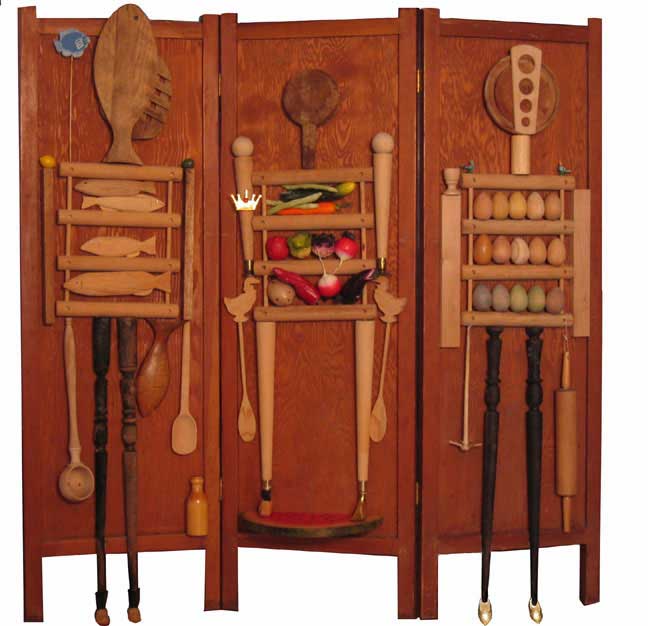Lindsey Dickinson
How the elements and principles
of design apply to the culinary arts
Elements of Design
1. Color and Value – Some colors
are more appealing then others. For example food served on a blue plate,
or on a blue tablecloth might look more appealing if served on green, yellow
or red.
2. Shape and Form – The shape or form of the plate or bowl
the food is being served in might complement the shape of the food.
3.Space – There
has to be space between items on a plate so they don’t mix, in taste
and color. And there is space between appetizers, the meal and desert.
4.Line – One
example of line could be when you’re served a piece of pie and they
drizzle chocolate or raspberry syrup over the top creating line or lines.
5. Texture – Different foods have different textures and some of them
have different textures depending on how they are prepared. For example,
mashed potatoes could be either smooth and creamy or lumpy. There might also
be a slight texture on the plate or bowl.
Principles of Design
1. Balance – The
balance could be symmetrical, asymmetrical or radial depending on the color
and shape of the food and the plate or bowl it’s served on.
2. Emphasis – The
main portion of the meal would most likely be the dominant. Lets say you
ordered salmon and it came with vegetables and rice. As the salmon is the
main part of the dish, it would probably be covering the rice with a nice
garnish while the vegetables are just scooped onto the plate. 3. Movement – Once
again the drizzle of sauce or syrup over a dish could create different amounts
of movement based on the type of lines created.
4. Variety and contrast -
A lot of foods have a variety of textures. Such as cakes, cookies, fruits
and vegetables (outside vs. inside) and so on. There could be contrast when
making spaghetti, red sauce with a green garnish. There are so many ways
these can be accomplished.
5. Proportion – There could be a large piece
of meat next to a bunch of little kernels of corn.
6. Unity – The
way they are finally served on a plate to make a meal somebody would love
to eat and hopefully pay for.
Frank, Bob and Marcel were
unusual: they liked to share their recopies. They put them into fortune
cookies. Because of that, the recipes had to be short. Frank's for Spaghetti
was, "Boil spaghetti and keep throwing single spago against the wall
until it sticks." Bob's was, "Add lemon to everything." Marcel's
was, "Add garlic to anything you cook." For all those undecided,
they had a list of things that taste like chicken on their menu. Their
meals had fancy names, for example, "ITALIAN FLAVORED OLIVES" or "CATFISH
FLAVORED FISH." The leftovers were served as a dish to the dogs. The
food was so good, it was called
"Sitting pretty spaghetti"
